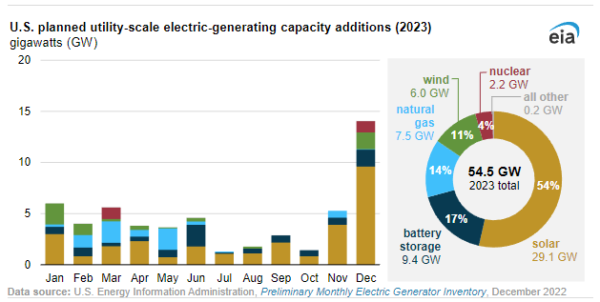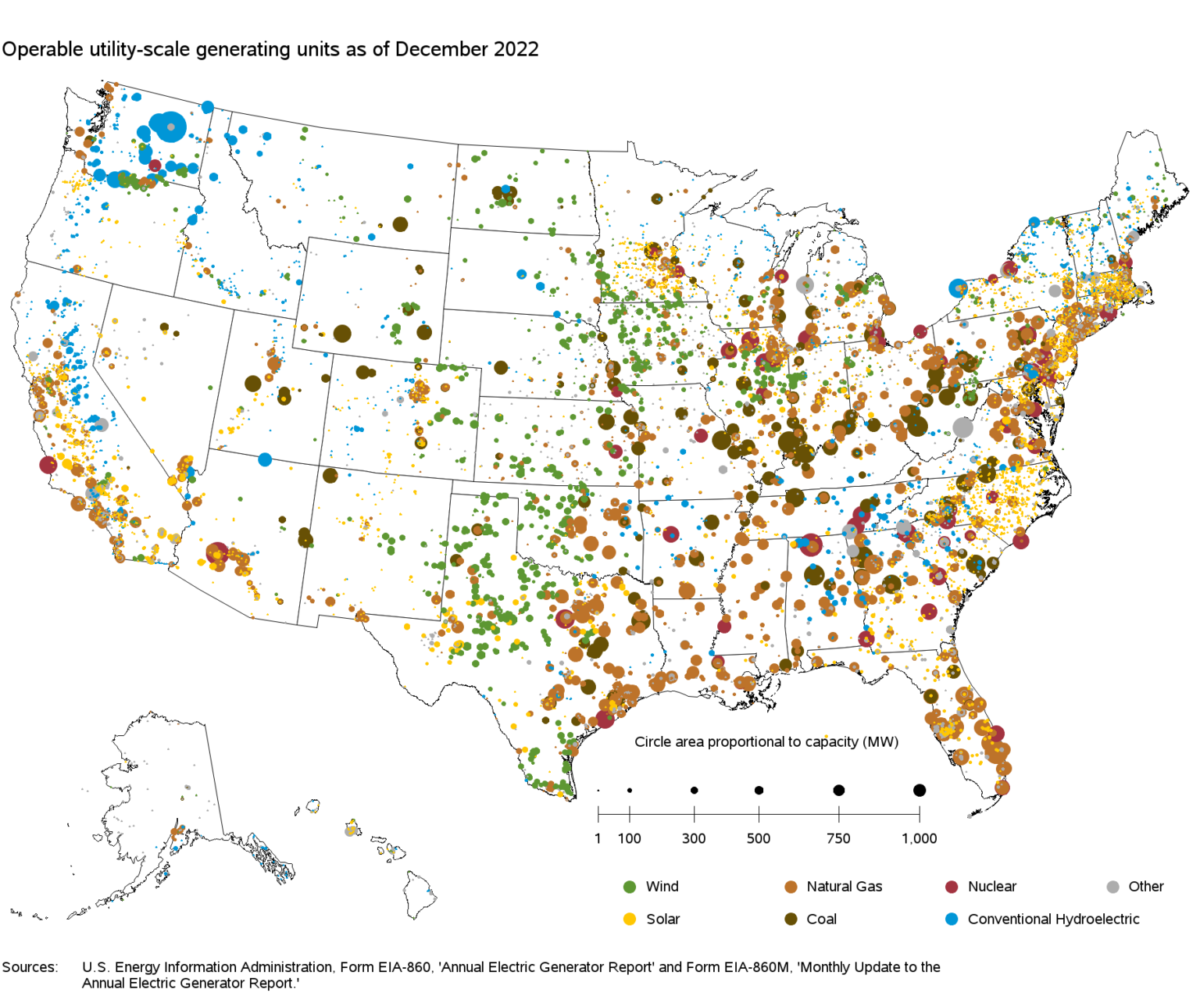From pv magazine USA
Buoyed by the US Inflation Reduction Act (IRA) and statewide requests for proposals for renewable energy, EIA researchers predict that US project developers will deploy up to 29.1 GW of solar and up to 9.4 GW of energy storage. This represents 70% of the 54.5 GW of new US generating capacity set to enter the grid this year.
In the EIA’s latest Monthly Update to Annual Electric Generator Report (EIA-860M), following delayed 2022 utility-scale solar projects due to trade issues from the Uyghur Forced Labor Prevention Act (UFLPA), the solar market is forecast to rebound this year with 29.1 GW of new installations. If all the new capacity goes online as planned, 2023 will have the most new utility-scale solar capacity added in a single year – more than doubling the current record of 13.4 GW deployed in 2021, says the EIA.
US utility-scale solar capacity has been rising rapidly since 2010. Despite its upward trend over the past decade, additions of utility-scale solar capacity declined by 23% in 2022 compared with 2021. This decline in solar capacity additions was the result of the UFLPA trade issues amid broader supply chain disruptions and other pandemic-related challenges.
In 2023, the EIA forecasts the largest new solar development queues to come from Texas (7.7 GW) and California (4.2 GW), which together account for 41% of new planned capacity.
Energy storage development has grown rapidly over the last few years, with that market currently eligible to start receiving its own 30% standalone storage investment tax credit under the IRA guidelines. In 2023, US battery capacity will likely more than double, according to EIA estimates. Developers have reported plans to add 9.4 GW of battery storage to the existing 8.8 GW of battery storage capacity accounted in recent years, the EIA reports.
Energy storage is rapidly increasing as paired with utility solar and wind projects. Batteries can store excess electricity from wind and solar generators for later use based on daily intermittent patterns from wind and solar generation. In 2023, the EIA expects 71% of the new storage capacity to also come from California and Texas, states with significant solar and wind resources. Arizona Public Service and Florida Power & Light, a NextEra Energy utility, are two of the largest offtake parties of storage for the year ahead, with battery systems ranging from 16 MW to 50 MW per project, while AES and Hawaiian Electric are procuring energy storage systems of 30 MW and 36 MW, respectively.

This content is protected by copyright and may not be reused. If you want to cooperate with us and would like to reuse some of our content, please contact: editors@pv-magazine.com.




4 comments
By submitting this form you agree to pv magazine using your data for the purposes of publishing your comment.
Your personal data will only be disclosed or otherwise transmitted to third parties for the purposes of spam filtering or if this is necessary for technical maintenance of the website. Any other transfer to third parties will not take place unless this is justified on the basis of applicable data protection regulations or if pv magazine is legally obliged to do so.
You may revoke this consent at any time with effect for the future, in which case your personal data will be deleted immediately. Otherwise, your data will be deleted if pv magazine has processed your request or the purpose of data storage is fulfilled.
Further information on data privacy can be found in our Data Protection Policy.